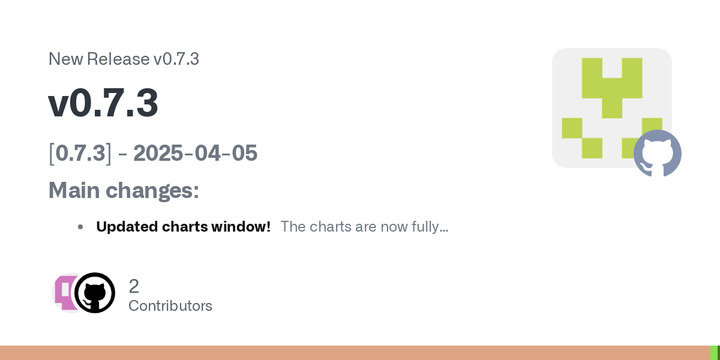Additionally, LACT introduces an embedded database of GPU AIB names, providing a fallback option for unidentified models and allowing user contributions to enhance the database. A notable feature is the emergency configuration reset option, which can be activated before booting the system, ensuring that users can revert problematic overclocking settings seamlessly. Other modifications include updated socket permissions, enhanced fan RPM reporting for Nvidia graphics cards, and various bug fixes and documentation improvements.
For anyone interested in supporting LACT's ongoing development, contributions can be made via Liberapay. Overall, this release not only enhances user experience through customizable features but also improves system performance and stability for GPU management.
Extended Summary:
LACT v0.7.3 aims to provide a more user-friendly and robust experience for Linux users managing GPU performance. The customizable charts window enables users to visualize their GPU's performance metrics more effectively, catering to personal preferences and specific monitoring needs. The inclusion of the Flatpak package format signifies a move towards greater accessibility, allowing users on diverse Linux distributions to easily install and use the tool, albeit with added system permissions.
The improvements in AMD settings, particularly for the RDNA3 generation, suggest a growing focus on ensuring reliability for users who push their hardware to the limit through overclocking. This is crucial as users increasingly look to maximize their hardware's potential for gaming and professional workloads.
The embedded database feature is a noteworthy addition, fostering community engagement by allowing users to contribute to the database, thereby enhancing the tool's overall utility. The emergency reset option addresses a common pain point for overclockers, providing a safety net against system instability caused by misconfigured settings.
With ongoing support avenues through donations, LACT v0.7.3 not only represents a technical upgrade but also a community-driven initiative aimed at enhancing the Linux GPU management landscape. Future updates may continue to build on this foundation, addressing user feedback and evolving with the rapidly changing landscape of GPU technology
LACT 0.7.3 released
A new version of the Linux GPU Control Application tool has been released, featuring an upgraded charts window, the capability to export historical data to a CSV file, and the introduction of LACT as a Flatpak package. The package works across all systems; however, it necessitates root access. The AMD settings have been implemented with solutions for RDNA3, guaranteeing that overclocking configurations are more dependable on 7000 series graphics cards. LACT features a comprehensive database of GPU AIB names, allowing users to contribute if their card model is not present in the system database. Furthermore, LACT now provides the capability for an emergency configuration reset through a boot option, enabling users to restore their overclocking settings prior to system startup. Additional significant modifications encompass the revised configuration for socket permissions and the reporting of fan RPM on Nvidia. The comprehensive changelog encompasses bug fixes, updates to specification files, and enhancements to the Fedora 42 package build. Support for LACT development is available on Liberapay.


